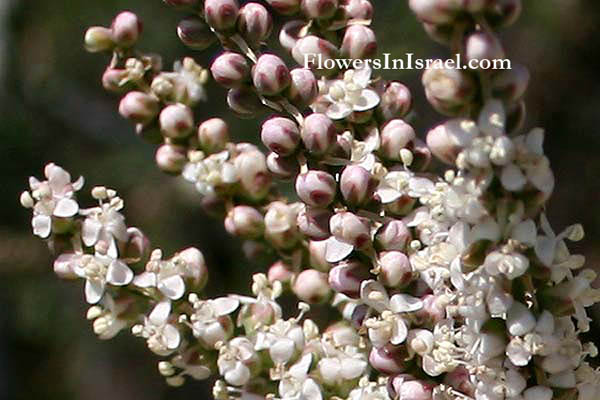Hebrew: אשל היאור, Arabic: لبع/هفرط
| Scientific name: | Tamarix nilotica (Ehrenb.) Bunge | |
| Common name: | Nile tamarisk | |
| Hebrew name: | אשל היאור | |
| Arabic name: | Abal/Tarfa, لبع/هفرط | |
| Family: | Tamaricaceae, אשליים |

|
| Life form: | Phanerophyte, tree | |
| Stems: | Shrub or small tree up to 6 m | |
| Leaves: | Alternate, sessile, narrowly lanceolate to narrowly ovate, concave, scale | |
| Flowers: | White oblong petals | |
| Fruits / pods: | Capsule 4–5 mm long; seeds terete, 0.5 mm long, brown | |
| Flowering Period: | : March, April, May, June, July, August, September, October, November, December | |
| Habitat: | Desert, Salty habitats | |
| Distribution: | Mediterranean Woodlands and Shrublands, Semi-steppe shrublands, Shrub-steppes, Deserts and extreme deserts | |
| Chorotype: | Saharo-Arabian | |
| Summer shedding: | Perennating |

Derivation of the botanical name: Tamarix, the Latin name for this plant derived from the Tamaris River in Spain. nilotica, from the valley of the Nile. The Hebrew name:אשל, eshel, ʾḗšel, Akkadian: ašlu; Ugaritic: Eshel; Aramaic אַתְלָא, (atla); Arabic أَثْل (ʾaṯl).
No less than seven species of Tamarisk are found in Israel, and several of them in great abundance." 
|